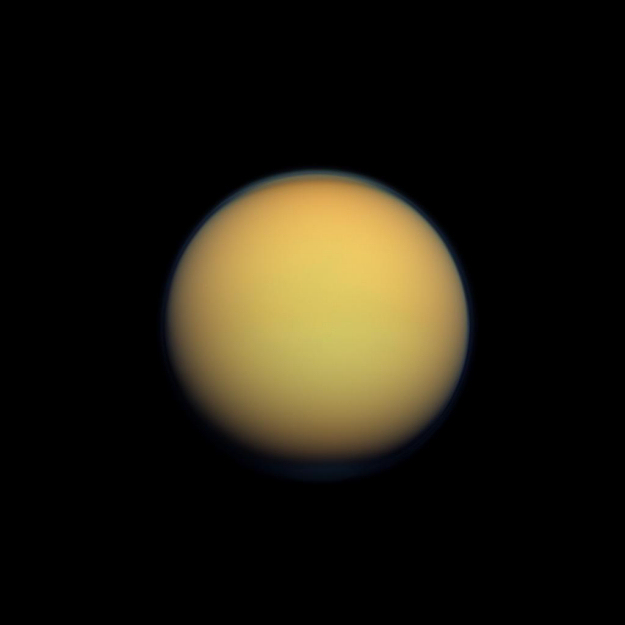Saturn's moon Titan

Date: 15 October 2013
Satellite: Cassini
Depicts: Titan
Copyright: NASA/JPL-Caltech/Space Science Institute
The existence of an ionosphere high above the surface of Titan has been known since it was first observed by radio occultation measurements from the Voyager 1 spacecraft in November 1980. However, most of our knowledge about the moon's ionosphere has been established following the entry of the Cassini spacecraft into orbit around Saturn in July 2004. Since then, regular flybys have provided opportunities for in situ studies of the environment of this moon.
A detailed analysis of data obtained with the Langmuir probe instrument, part of the radio and plasma wave science instrument on board Cassini, has confirmed predictions that the density of Titan's ionosphere is directly linked to the 11-year solar cycle.
The image above is a natural colour view of Titan taken with the Cassini wide-angle camera on 30 January 2012. It was produced from images taken using red, green and blue spectral filters. The spacecraft was at a distance of approximately 191 000 kilometres from Titan. The image scale is 11 kilometres per pixel. This view looks toward the anti-Saturn side of Titan. North is up.
The Cassini-Huygens mission is a cooperative project of NASA, the European Space Agency and the Italian Space Agency (ASI). The Jet Propulsion Laboratory, a division of the California Institute of Technology in Pasadena, manages the mission for NASA's Science Mission Directorate in Washington.
